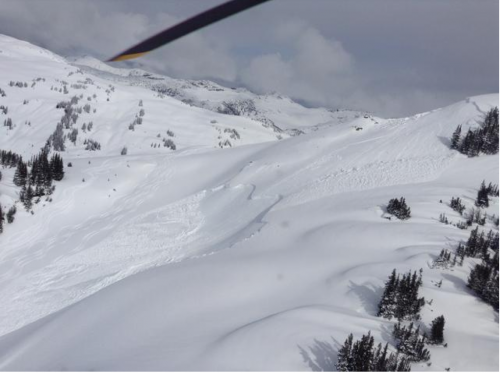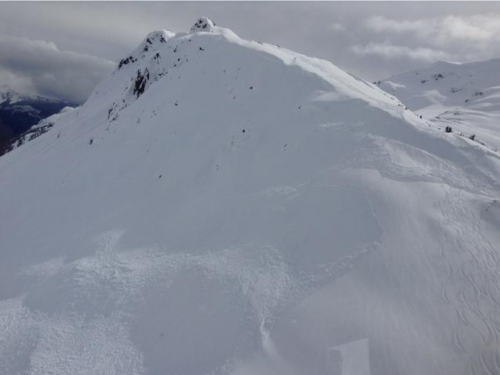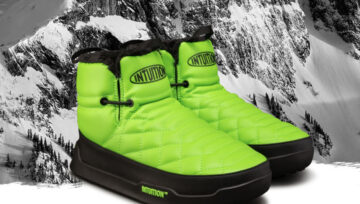An Interior Problem On The Coast
In the last few days, there’s been a string of close calls and near misses in the Sea to Sky region. There’s some, but not a lot, of natural activity occurring so there’s no “Wow look at that!” feedback loop telling you there’s a problem. And riding is great right now so there’s a lot of incentive to get at it.
Before you go though, listen to this: avalanches are being triggered remotely (that’s when you’re not even on the slope and you trigger something from a distance), sympathetically (that’s when one avalanche triggers another on a nearby slope), and directly by human activity like snowmobilers, skiers, and snowboarders. And some of them are big, up to size 3 (large enough to pancake your pickup) and rumours of a size 4 (big enough to take out a railway locomotive). These are not things you want to mess with—getting caught in one of these monsters is essentially un-survivable. This problem exists in most of the region including off-piste areas adjacent to the Whistler-Blackcomb ski area boundary.
Check out this report from our Mountain Information Network
Here’s some photos that illustrate the remote and sympathetic triggering:


This kind of condition is unusual in the coastal ranges. Usually you’re dealing with weak layers that settle and bond within a few days. In this case, though, I think this condition will persist for a while—it’s more like what we often deal with in the interior mountains—a persistent weak layer (PWL). The recent fatalities in the Cariboos are likely the result of a similar PWL as we’re seeing on the Coast.
The additional complication is this problem will not exist on every slope but determining which slope is safe and which is not is a complex puzzle that requires training, experience, local knowledge, and familiarity with PWL avalanches. Most people, even professionals who have decades of experience with this kind of problem, tread carefully in these circumstances.
My advice is, if you are not fully familiar with PWLs and the local conditions, be very careful for the next week or so. Stay off of big steep terrain for now and avoid terrain traps (cliffs, gullies, etc.) like the plague. Stay away from areas that have avalanche paths above. Don’t hang out under cornices or slopes where others are playing above you. And, as Ilya mentioned in his previous post, tracks on a slope may not be a sign of intelligent life—just because the other guy got away with it doesn’t mean it’s a smart or safe thing to do.
And be even more cautious when the weather changes. Things are going to evolve rapidly over the next few days with more snow coming then a warming trend with sunny conditions, so this morning’s safe slope might be an afternoon death trap.
To help us and your fellow riders figure all this out, use the Avalanche Canada iOS or Android app to submit and share your observations on the Mountain Information Network. Or submit from your computer at the end of the day with a beer in hand: www.avalanche.ca > Avalanche Information > Submit Information.
You can reach me at kklassen@avalanche.ca . Or contact the forecasting office at: forecaster@avalanche.ca or 250-837-6405.










Comments